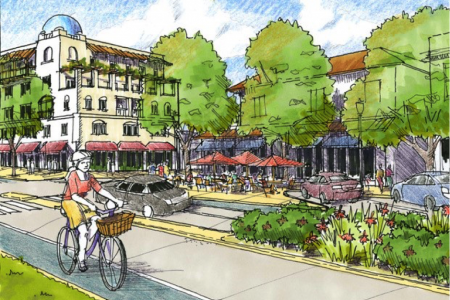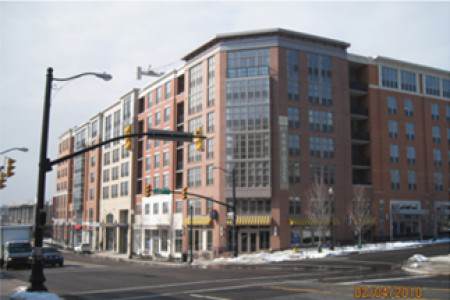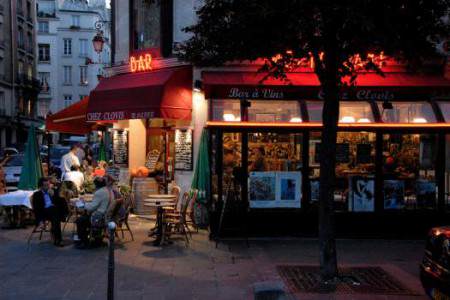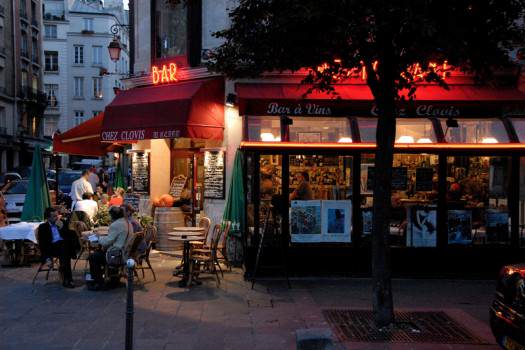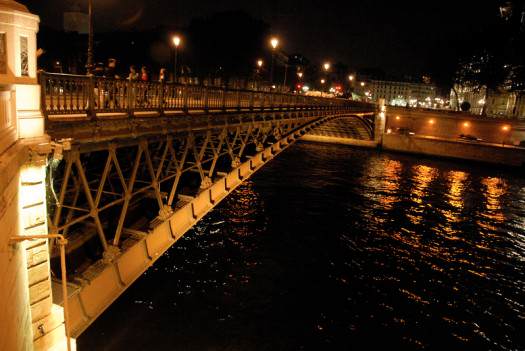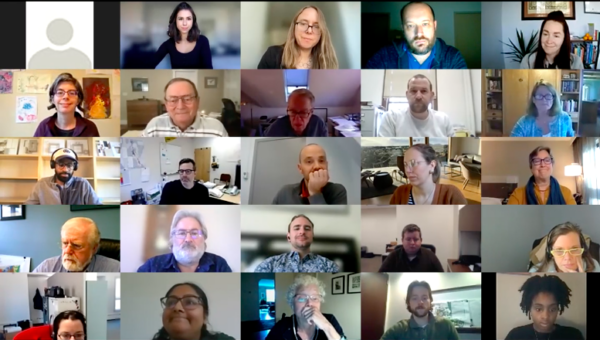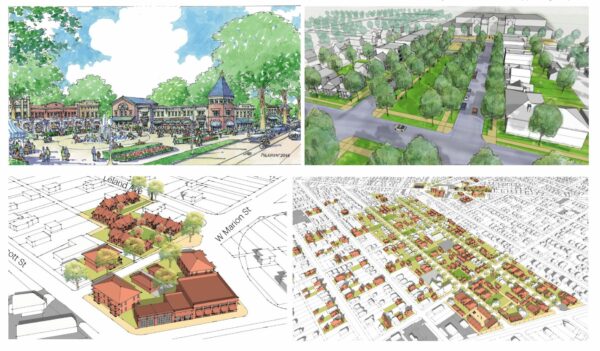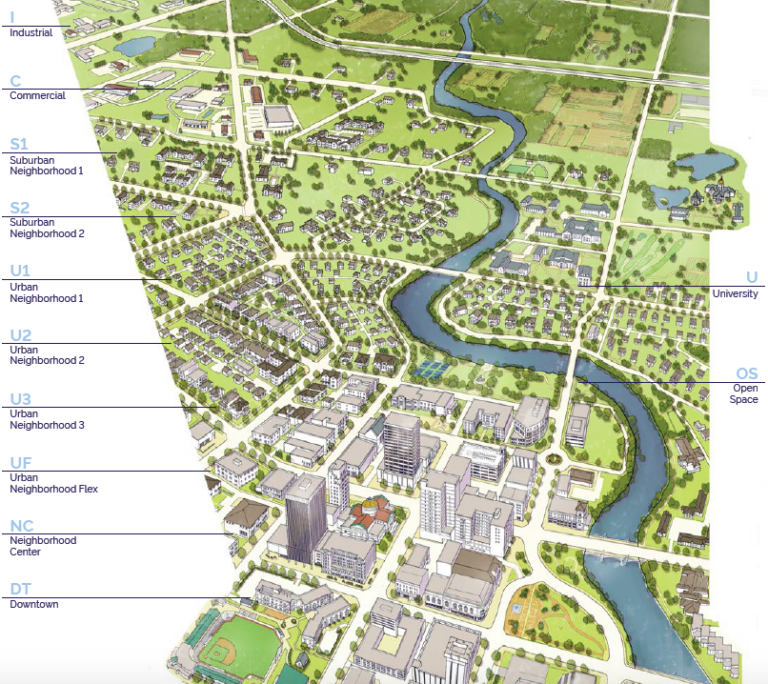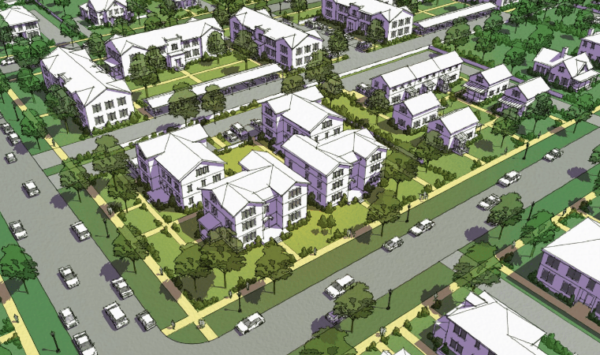In the words of Socrates, “By far the greatest and most admirable form of wisdom is that needed to plan and beautify cities and human communities.”
For those of us devoted to the arduous and complex task of building better places, an intriguing question was succinctly asked of the FBCI recently and it sparked a healthy debate amongst us.
How is a form-based code more effective than a conventional use-based code with form standards added to it?
We believe it is, but explaining exactly how requires us to be more precise.
But first, let’s take a step back in understanding how form-based codes (FBCs) came to be reintroduced into our planning lexicon. They are by no means new. The principal reason form-based codes were proposed, as an alternative to Euclidean codes, was one of absolute necessity in an attempt to provide a legal zoning framework that more consistently delivered walkable, mixed-use, compact communities of lasting value. New Urbanist plans were too often being derailed by, or just deemed too difficult to implement due to the convoluted zoning process. The existing codes simply no longer provided communities with what they collectively wanted and came to be viewed by planners, unhappy citizens and a growing cadre of elected officials as ineffective, complicated, unpredictable and costly. So change, and radical change no less, came about with a much greater emphasis on physical form, a higher quality public realm and character of place. FBCs have managed to achieve such desired physical outcomes more consistently and in ways that conventional codes have not.
While coders may argue that both FBCs and conventional codes can yield good designs, and indeed they can and have, I’d first rephrase the question to ask “which is more likely to yield a better place?” and to me, unequivocally, the former will. That is because FBC’s are principally designed to achieve a specific physical outcome with a primary focus on form and character of place and a secondary focus on uses and permitting. FBCs allow sustainable planning and infrastructure practices to shape communities. A good FBC organizes and regulates development by degree of urbanism, and manages to strike that delicate balance of being prescriptive enough to yield certain outcomes but not rigid enough to stifle creativity. An often-read critique accuses FBCs are being too prescriptive and rigid on aesthetics, yet most are silent on architectural style. Instead, I’d argue that FBCs provide more flexibility by assigning a different set of urban standards than use-based codes assign, yet allow for a much greater mix of uses within a building. I have yet to see a conventional use-based code, even with form-based standards attached to it, prioritize form within its proper context or provide the integral toolkit of components needed for place-making. Instead, we have seen the single-use, sprawl-inducing, auto-centric developments this typically yields.
The great places we love to visit have certain fundamental established elements that are not only measurable but that also provide the flexibility needed to evolve over time. None of them are strictly related to use, beyond facilitating mixed-uses. As an architect, I am well aware that zoning codes are no substitute for good architecture, but they can ensure a higher quality urbanism by establishing clear rules that shape the buildings, which is arguably more important. At their essence, FBCs more precisely regulate development to achieve a specific urban form and place particular emphasis on three critical issues that promote mixed-use, walkable environments. These are: 1) the relationship between a building and the street (a building’s frontage); 2) the public spaces; and 3) scale transitions between development intensities. FBCs do not ensure a great place any more than conventional codes preclude great places, but I believe they provide the better, reality-tested tools for crafting the vision.
So back to the original question posed above. The answers fall into two main categories:
1. FORM & TYPOLOGY
A key difference is that FBCs more precisely provide the essential range of tools required to ensure place-making in a manner that had become a lost or forgotten art. FBCs explicitly establish the relationship between the design of the public realm and private frontage and how the different components (such as frontage standards and building type standards) must interact together in order to achieve a community’s vision and shape their community accordingly. Such typologies are not as implicit in the more conventional codes.
(Images courtesy of City of Miami Planning Dept.)
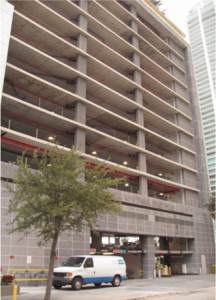
Before the new form-based code
Miami, Fl
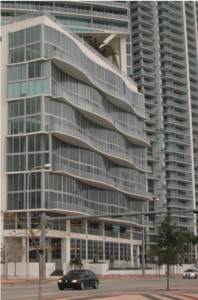
After the new form-based code
Miami, FL
2. PROCESS & PLANNING
FBCs are often accompanied by master plans and/or regulating plans that tie form to pattern in ways that use-based codes do not. This makes FBCs more effective as they are often arrived at through a collaborative, community-based planning effort designed to settle on a vision plan.
Implementing FBCs are hard work and require great political will, support and commitment on behalf of elected officials and the community-at-large. However, once adopted, FBCs provide clarity of vision and allow for mixed-use and walkable environments by right, or with an easier approval process because a predictable physical outcome is much more likely and they have already received community support. Clear, user-friendly, graphic regulations also make the code easier to navigate and administer. Of course, conventional codes have also produced great urban spaces. However, they typically require greater effort through prolonged case-by case negotiations, which often prove to be too time-consuming, less fair, and unpredictable to be truly effective on a large scale. And that is why, even with the best of intentions of use-based codes, so many places fall short of the desired physical form. Conventional zoning codes introduced PUDs in an attempt to provide greater predictability of place, but they have yielded mixed results.
-
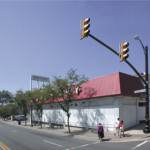
-
Safeway in 2002: Columbia Pike BEFORE form-based codes
-
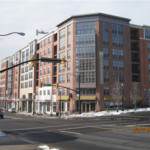
-
Safeway in 2010: Columbia Pike AFTER form-based codes
FBCs are by no means a panacea to all zoning woes. Our real mission is to enhance and create great urbanism by removing impediments in our current zoning codes. There are many ways to achieve that. All codes are unique to their place and context and I readily acknowledge there is a place for more conventional zoning or hybrid form-based zoning, depending on a host of factors, including a community’s desire to be preserved, allowed to gradually evolve or undergo substantial transformation.
Of course, the true measure of the success of both types of codes will ultimately be determined by the quality of development within a community, the work it took to achieve it, and how much it is loved, used, reused and respected by its residents over time.
The number of cities choosing to adopt form-based codes grew slowly at first, but is now growing exponentially as small and large, national and international municipalities alike begin to more forcefully shape their vision plans for more economic resilience, socially equity and environmental sustainability. According to one count, 455 form-based codes meet FBCI criteria, covering 39 million acres and 42 million people, generating billions of dollars of economic development and providing vital real-life testing of character-based land use regulations. Moreover, since 82% of these have been adopted since 2003, population density is expected to increase dramatically as development occurs under these form-based codes. (Source: http://www.placemakers.com/how-we-teach/codes-study/)
However, FBCs represent a mere 1% of codes currently under use. So much work remains to be done, yet I’d argue that FBCs are gaining traction when we begin to see conventional, use-based codes adapted with form standards attached to them. This too is an encouraging step in the right direction.
Read More →
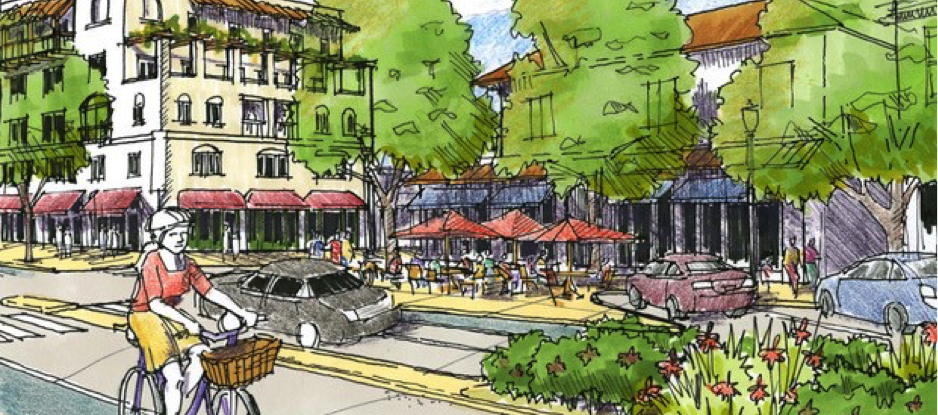 Wednesday, November 20 at 1 p.m. ET | Register >>
Wednesday, November 20 at 1 p.m. ET | Register >>
